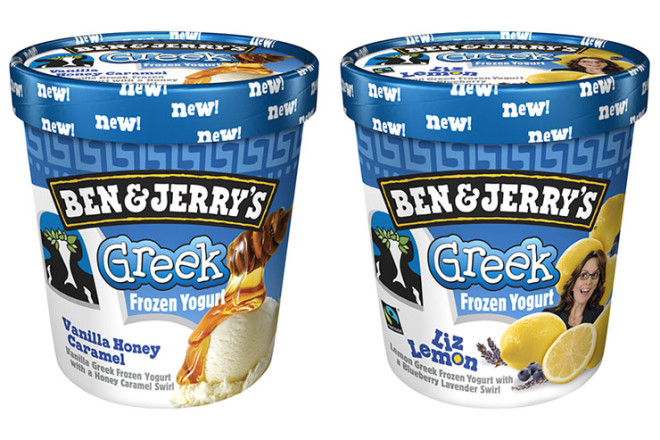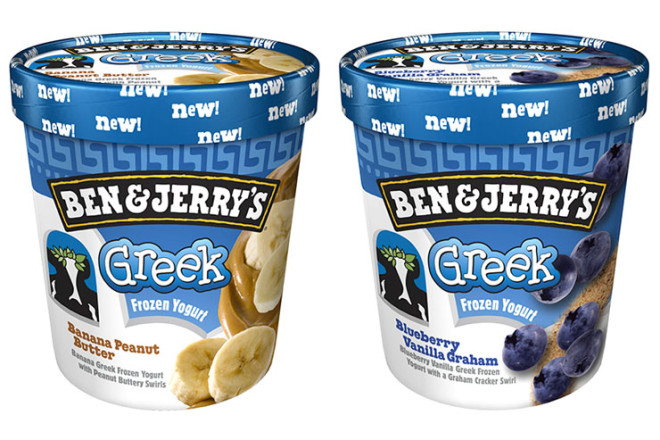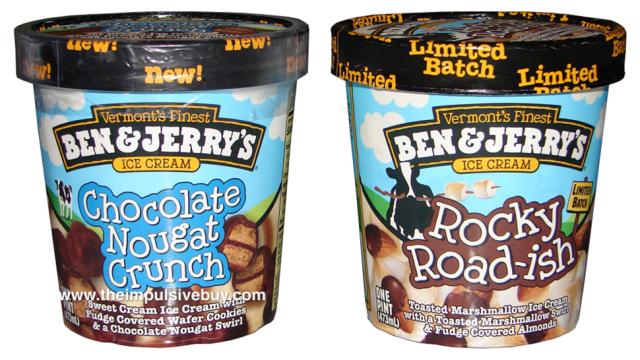Kirsten Schimoler is a food scientist and Flavour Guru at Ben & Jerry’s. In this interview, originally published on True To Me Too, David James Logie gets the scoop on everything from GMOs and doughnut ice cream to so-called flavour graveyards.
What’s the difference between a chef and a food scientist?
Chefs are classically trained in the culinary arts. Some schools have now added some basic food science and nutrition courses into the culinary arts programs. Chefs normally have a background in culinary arts whereas a food scientist is a lot more of a technical position.
Generally your first two years of study are essentially the pre-med track where you’re taking all the basic sciences from chemistry, organic chemistry, biology, microbiology, and then you get more detailed and start taking food chemistry, food microbiology, engineering classes, sensory science classes, nutrition, it’s very very technical whereas chefs are technical in an artistic way. It’s very very rooted in the sciences.

When did you figure out food science could be a potential career path?
I grew up in a family that worked in the food industry. My dad always owned restaurants, he actually worked doing product development for some of the bigger food companies. I knew about it at a young age because I was exposed to it. Once I realised that I could play with food and have a career in food and not have to work in a restaurant, I thought that was great.
How’d you pursue it? How’d you pick what classes to take and what universities to apply to?
I actually kind of knew that I wanted to go to Cornell and once I did some more research I found out they had a really great food science program, so it was just a perfect fit.
What was your specific focus in your last two years at Cornell?
For the most part you study all aspects. I concentrated in operations and management but for the most part you still take all of the same classes. You’re taking a food analysis lab where you’re really breaking down the chemistry to figure out how many calories are in something or how much protein or carbs are in something. Then you go into classes like food chemistry, food packaging, food safety; but I also took some basic business courses, such as marketing, management, finance. At Cornell there’s a handful of different focuses: food engineering, basic food science, food science operations and management, and food microbiology. I chose operations and management.

What areas of the food science industry do you think are growing or in demand right now?
I think that careers in food science are growing and not a lot of people know about them. Food safety is really important, a career in food science and food safety could lead to something like being a microbiologist and working in quality assurance or working on the legal end of food safety and becoming a lawyer for bigger food corporations.
We are also trying to feed a growing population so creating a safe food supply in countries that don’t necessarily have one now is a big area of growth. Also, food engineering and packaging, creating sustainable packaging for the food we eat and looking at how do we grow our food supply sustainably.
What is something you learned in school that has really helped you in your career?
In a career like food science you’re always problem solving and you always need to take time to look and discover. You need to do experimentation to figure out how to get to your end result. The other part is working on and being diligent to come up with answers and solve the problems that you’re faced with.
For instance, if we’re creating a new product and we’re seeing a problem with the texture or something is going wrong in the manufacturing process we might not have an answer right away but you spend a lot of time trouble shooting and problem solving to make sure you’re making the best product.
I attempted to read through some food science journals and it seems like the field is always changing, there are constantly new breakthroughs and discoveries, how do you keep on top of everything that’s going on and incorporate it into your work?
I’m a member of different food science organisations. I use the Cornell food science alumni network. There are tons of industry newsletters and publications so it’s a daily, monthly, weekly type of thing where maybe you get an email that has 30 different headlines about what’s new in the food industry and what’s going on with food science. Also, talking to other alum from Cornell or other food science professionals.
You have an MBA as well, what’s the benefit of pairing a business degree with a science degree?
Working for a large corporation such as Unilever and Ben & Jerry’s my job isn’t just food science. I’m part of a cross-functional team, which includes marketing, supply chain, finance, manufacturing, so I’m constantly working with people who do something different than I do. In order for me to be a well-rounded product developer, having an understanding of those business principles on an academic level helps me work better with them. It also gives me the background to be able to manage within a research and development team.

Would you recommend that to aspiring food scientists?
I think it really depends. Some food scientists goals are to really be rooted in research or very very technical development, so on that route they end up pursuing a masters or PhD in food science or another science, perhaps chemistry or microbiology, and they want to become a flavour chemist. That’s one route.
Another route is if you’re in the corporate world, to get an MBA so you’ll have the ability to manage a research and development team or move over into another function like supply chain or marketing.
How did you go about getting your first job?
It was actually kind of just by luck (laughs). I was doing a lot of on campus networking, going to a lot of recruiting events on campus, just kind of using my network within the career development office at school.
Istarted looking for a job in September of my senior year and I ended up kind of randomly doing an interview on campus with some recruiters from Unilever and ended up getting a second interview. I got an offer in April of my senior year, so lucked out because when I graduated the job market was pretty terrible.
With a degree in food science, you know what you’re doing coming out of school as opposed to a general liberal arts degree you might not really know what you want to do, or maybe you got a business degree and you’re not sure if you want to go into marketing or management or finance. Coming out with a degree in food science, there was about three options for what I would do. [laughs] It was either sort of research or product development or back to school.
I spoke with a brewer a couple weeks ago and we talked about his research phase, which was mostly drinking; I guess for you research would just be eating?
Our research involves a lot of different things. Idea generation, sitting down with the team and talking about different things. There’s also a lot of online and media research, so reading relevant culinary publications.
A couple weeks ago our team got back from a research trip, which is a yearly trip that we do, we call them “trend treks”: we pick a city, we do a ton of research on that city, and we spend three to five days in that city. Literally, we’ll just walk around and eat and drink. We don’t limit it just to ice cream: we go to breakfast places, cocktail places, ice cream shops. We look at dinner stuff. Then there’s a lot of experimentation in the lab. Maybe you saw a recipe for a great looking desert in a magazine, or something on Pinterest, and then you think about how that might go into ice cream and play with it in the lab. There’s a couple different parts of research, one of the main ones is shopping and eating though.
Say you found a delicious doughnut how would you go about making that into an ice cream flavour? I imagine everyone on your team would have a different idea of how to turn a doughnut into ice cream, what’s the collaboration process like when developing products?
There are five developers on our team and you’re totally right: if someone said make a doughnut concept, I think all five of us would make it completely different. I might say, “I’ll make a doughnut concept and I want to make a coffee and doughnut ice cream,” so it will be coffee ice cream with pieces of doughnut in it and someone else might say, “I want to make my ice cream taste like a doughnut and there’s no chunks but maybe there’s a swirl.”
Everyone does have a different idea and there is a lot of collaboration between the five of us, maybe one of us is tasked with creating this doughnut flavour, but we would sit down with the whole team and talk about what the options might be. Then we’d make up a few different variations and eat them and taste them and see how we would tweak the product.
We also work very cross-functionally so there’s five developers but within a team of developing a new product there’s probably eight to 10 people involved so you’ve got people who do consumer research, individuals who work in marketing, it’s a collaboration between everyone there. Maybe there’s a prevalent trend in doughnuts, or maybe a customer is looking for a specific flavour profile of a doughnut, so there’s collaboration within the research and development team and there’s also collaboration within different functions.

Ben & Jerry’s research and development team (Right to left: Kirsten Schimoler, John Shaffer, Eric Fredette, Chris Rivard, Peter Lind, Paul Szalkucki and Marianne Corcoran)
Ben & Jerry’s has a graveyard for discontinued products, which made me wonder how you test your products. To me, it’s ice cream so I imagine it’s all going to taste great, but if you come up with a flavour you really like, how can you be sure that it’s going to work and customers will support it?
We work with marketing and with consumer insights to sometimes test products before we launch them, to make sure that it’s something consumers will receive well. If we had it our way we’d launch every flavour and have as many flavours on the shelf but within the grocery store there are limitation with how many different things you can have out there at one time. If it’s not in the top 40 flavours, it ends up in the graveyard.
What is your involvement in sourcing ingredients? Do you start that early in the developing process?
I’m actually the research and development lead for our Values-Led Sourcing (VLS) project, which is the transition to non-genetically modified organisms (GMO) and fair trade so I work very very closely with individuals in our supply chain as well as the suppliers who supply us with everything from our dairy to our sugar to our chunks and swirls. I spend a lot of time working on that right now.
Ben & Jerry’s recently announced it was going GMO free by 2014, what was the motivation behind that decision?
It’s been a long time coming for us. We’ve always been a forward thinking company but right now we’re kind of at the forefront of this, there’s a lot of action going on in a lot of states.
Our main driver is just giving our consumers the right to know what’s in their products. Us doing this is giving us the opportunity to really influence the supply chain and create that market for non-GMO products.
What are some of the challenges of this transition in the food science department?
About 94-96 per cent of all the soy and corn grown in the United States is genetically modified so that does create a large hurdle as we’re looking for mass quantities of certain items. Sugar beets were recently approved to be non-GMO. If we’re using sugar we have to then source solely cane sugar.
Originally, when we started working on this the availability on non-GM corn and soy and canola in the United States was pretty small, so then you’re looking to source from European countries where they have mostly transitioned to non-GM items.
We’re really just trying to influence the supply chain to be able to get domestic conventional non-GM corn and soy to use in our products.

You launched the Ben & Jerry’s line of greek frozen yogurt last year. How did that project come about?
We were looking at what our next innovation was and it was an interaction between research and development and a marketing manager who were talking about what they were going to do next when they realised they were both eating greek yogurt. We said, alright, people love greek yogurt and we think we could make a really good product. That’s how it came to be; it was an interaction in a hallway.
Outside of all the ice cream what are some perks of the job?
If you eat as much ice cream as much as I do, you have to exercise. We have a really great wellness program and a gym in the office. Yoga is offered a few times a week. We get free gym memberships. For me, it’s a requirement because we do eat a ton. If you work in the office, we get three pints a day to take home, but I never take ice cream home so that’s not really a perk that I take advantage of. Another perk is travel. In the last 3 months, I’ve had the opportunity for work to go to New York, Portland, Chicago, Wisconsin, London to spend two weeks in the UK. There’s a lot of fun perks, whether you’re travelling to do a trend trek or you’re going with public relations to an event. The office environment is really fun, you can bring your dog to work. It’s pretty casual.
If you weren’t working on ice cream what kind of food would you be working on?
I think my next job is going to need to be a health product. [laughs] I’ve always said I don’t think I could develop a product that I wouldn’t personally buy; you need to be really passionate about the stuff that you’re working on. When you have to be so close to your product and you’re eating it pretty much everyday, you’d rather be working on a project that you really like and are passionate about.
What are some different positions within food science that people might not know exist?
You could be working in straight research, doing research at a university, maybe about the health benefits of sour cherries, looking at antioxidants. I have friends who are process engineers, so they work to build the machines that manufacture ice cream or tomato sauce. I also have friends who are packaging engineers; there’s quite a bit of science that goes into creating packages that people never think about. I have a friend who I graduated with and she was working for NASA, developing food for space missions. I have a ton of friends in the industry. Some work for Hershey’s, Kool-Aid; it really spans over the entire food industry.
I always say, if you walk into a grocery store, every product in there there is someone like me behind it, whether it’s Oreo’s or orange juice. There’s a food scientist that worked on that product. There’s really a lot you can do, you can work in a government agency, you could work for someone like NASA, or you could work for someone like Ben & Jerry’s.
Do you have any advice for someone trying to get started in the food science industry?
It’s really challenging, but it’s really rewarding. If you’re really passionate about food and you don’t necessarily feel that being in the kitchen or being in the restaurant is the place for you there are still a ton of opportunities to have a career working within the food industry.
This post was originally published by David Jamieson Logie on True To Me Too, and has been shared here with permission.
